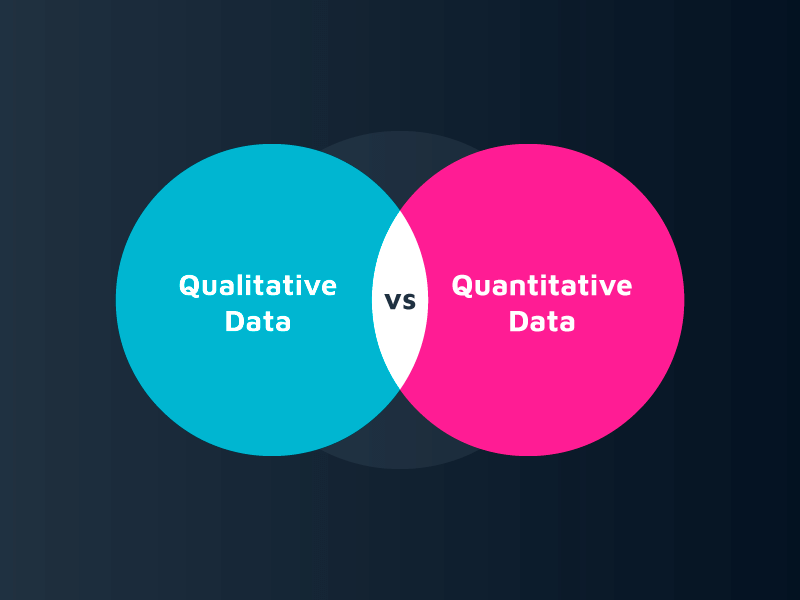Quantitative data is anything that can be counted or measured; it refers to numerical data.
Qualitative data is descriptive, referring to things that can be observed but not measured—such as colors or emotions.
What is quantitative data?
Quantitative data refers to any information that can be quantified. If it can be counted or measured and given a numerical value, it’s quantitative data. Quantitative data can tell you “how many,” “how much,” or “how often”—for example, how many people attended last week’s webinar? How much revenue did the company make in 2020? How often does a specific customer group use online banking?
To analyze and make sense of quantitative data, you’ll conduct statistical analyses.
What is qualitative data?
Unlike quantitative data, qualitative data cannot be measured or counted. It’s descriptive, expressed in terms of language rather than numerical values. Researchers often turn to qualitative data to answer “Why?” or “How?” questions. For example, suppose your quantitative data tells you that a sure website visitor abandoned their shopping cart three times in one week. In that case, you’d probably want to investigate why—and this might involve collecting some form of qualitative data from the user.
What is the difference between quantitative and qualitative data?
The main differences between quantitative and qualitative data lie in what they tell us, how they are collected, and analyzed. Let’s summarize the key differences before exploring each aspect in more detail:
- Quantitative data is countable or measurable, relating to numbers. Qualitative information is descriptive, relating to language.
- Quantitative data tells us how many, how much, or how often (e.g., “20 people signed up to our email newsletter last week”). In addition, qualitative data can help us to understand the “why” or “how” behind certain behaviors, or it can simply describe a particular attribute—for example, “The postbox is red” or “I signed up to the email newsletter because I’m interested in hearing about local events.”
- Quantitative data is fixed and “universal,” while qualitative information is subjective and dynamic. For example, if something weighs 20 kilograms, that can be considered an objective fact. However, two people may have very different qualitative accounts of how they experience a particular event.
- Quantitative data is gathered by measuring and counting. Qualitative information is collected by interviewing and observing.
- Quantitative data is analyzed using statistical analysis, while qualitative data is analyzed by grouping it in terms of meaningful categories or themes.











